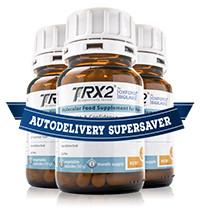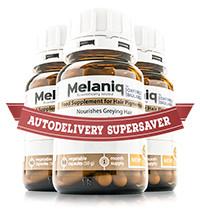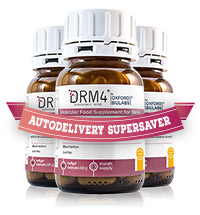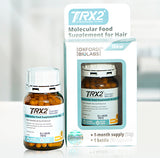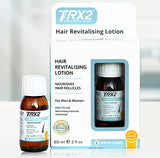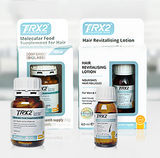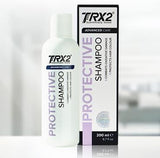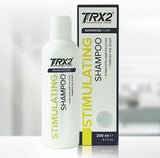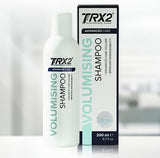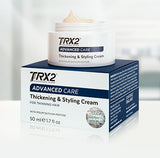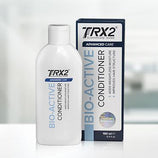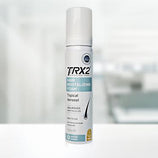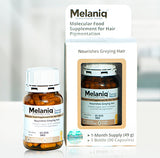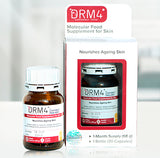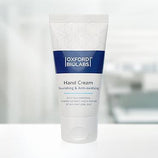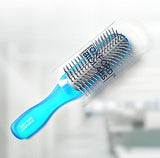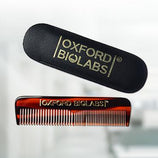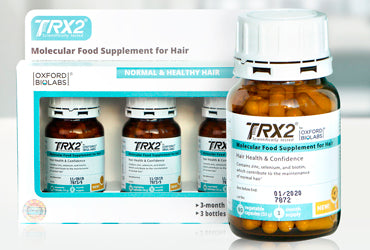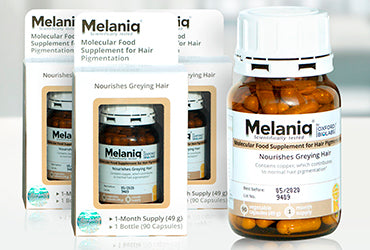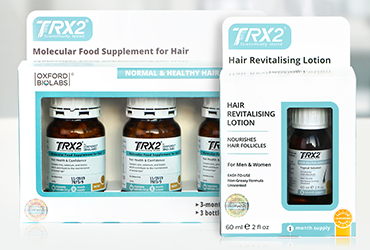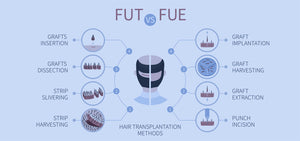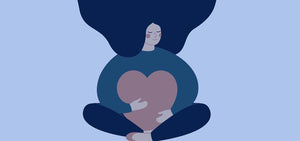What causes hair loss and what can be done about it?
Hair loss is a normal part of ageing. By 50 years of age, 50% of men experience some degree of hair thinning. Depending on multiple factors, first and foremost, genetics, the severity and progression rate can either increase or decrease. Sometimes, triggers like stress, hormone fluctuations, diet, nutritional deficiencies, and underlying medical conditions can cause a person to have bouts of intense hair loss which fuels the fire of low self-esteem and self-confidence. There are numerous ways to manage hair loss, but it can be difficult to judge which one fits best. This guide will highlight how to treat male pattern baldness naturally with no side effects and maximum results.
How DHT and the deterioration of Potassium channels cause hair loss
The main factors that cause hair loss are the following:
- Genetic predisposition
- The binding of DHT (dihydrotestosterone) to hair follicles
- Poor blood circulation around the hair follicle
- Deactivation of hair matrix cells
DHT is a natural by-product of the human body. It is also present in human hair follicles. Due to genetics or specific triggers, the enzyme that breaks down testosterone into DHT, 5α-reductase, is produced in greater quantities. This inability to neutralise DHT causes it to build up in hair bulb cells, affecting the function of the hair follicles and causing them to miniaturise. Thinning occurs, and then gradually full baldness starts to set in.
The second culprit in the development of hair loss are poorly functioning potassium ion channels. These small protein structures are present in almost all living cells and are responsible for regulating the flow of ions across the cellular membrane. Through research done by Dr. Thomas Whitfield, DPhil (Biochemistry) at Oxford University, it was shown that as a person begins experiencing hair loss, these potassium channels eventually stop working. This results in disrupted function and impaired membrane potential, leading to the miniaturisation of hair follicles and thinning hair.

The impact of hair loss on quality of life
Self-confidence and self-esteem are deeply rooted in a person’s outward appearance. Obviously the saying “it’s not what’s outside that matters but what’s inside,” is theoretically true, but rarely does it satisfy the perceived negative effects, especially with hair loss.
In surveys, men with greater hair loss were more concerned (and more bothered) about looking older than their age and reported significant negative effects on quality of life associated with their hair appearance.
In a study done on patients with alopecia, the quality of life scores were on par with patients experiencing severe psoriasis, which shows that hair loss has a deep psychological impact.
The most common complaints connected with hair loss include:
- Loss of self-esteem
- Loss of self-confidence
- Heightened self-consciousness
- Desire to disguise hair loss
Prescription hair loss medications come with caveats
In science’s quest to come up with a solution on how to treat male pattern baldness, two prescription medications stand out. First minoxidil, most known through it use by Rogaine/Regaine, and a second group which as been designed to block the 5α-reductase enzyme that is responsible for overproducing DHT. Prescription medications like 5α-reductase inhibitors can be used to block this transformation into DHT, effectively stopping it from being produced. However, due to their nature, prescription drugs come with side effects, some of which may be long-term and irreversible.
Minoxidil side effects
Recently, evidence concerning minoxidil came to light that demonstrated its ineffectiveness for improving hair growth for most men with androgenetic alopecia. The study included 1,495 men, of which approximately 95% stopped using minoxidil due to a lack of hair regrowth or stabilisation of hair loss.
Minoxidil side effects vary from rapid hair shedding to various heart problems like palpitations. Men that discontinue use due to side effects or other reasons often complain of a rebounding effect that is severe enough to return the patient back to pretreatment status within a few months. In a small study, four of the 10 men that stopped using minoxidil actually had hair counts fall below baseline levels, perhaps indicating a return to the natural hair loss process that was interrupted with topical minoxidil therapy.

5α-reductase inhibitor side effects
Drugs that interfere with natural hormone metabolism are bound to have unwanted side effects. In the case of 5α-reductase inhibitors, these side effects range from sexual dysfunction to emotional changes.
In a 2017 study on 5α-reductase inhibitor side effects, scientists showed that the risk of persistent erectile dysfunction (PED) was greater among young men with longer exposure to the drugs. A small percentage (1.4%) developed PED that continued on average for a median 1.348 days after discontinuing use of the drugs.
Additionally, psychological changes have been noted. In a 2017 study, researchers examined the association of suicidality and depression with 5α-reductase inhibitors. They found that the most common side effect was depression, with self-harm in close second. The study authors concluded that these changes were grounds for discontinuing the use of such drugs.
Natural ways to stimulate and support hair growth
Hair thinning and loss are noticeable, psychologically-damaging, and notoriously hard to reverse or treat. While the prescription drugs promise a lot, they also deliver unwanted side effects that could make one think twice about weighing the risks and benefits. The amount of lawsuits that are ensuing due to prescription drugs is growing, and with that, the overall perception of naturally-based alternatives is changing. Is it possible to see visual improvements with just naturally-based regimens?
TRX2®
The natural, drug-free flagship product from Oxford Biolabs® is the result of Oxford-based research on potassium channels, which play an important role in the health and functioning of hair follicles. TRX2® consists of a proprietary potassium channel-stimulating complex and powerful nutrients that activate, stimulate, and improve hair growth. The TRX2® clinical study found over 8 out of 10 people experienced noticeable improvement after using TRX2®.
- Biotin (Vitamin B7)
- Niacin (Vitamin B3)
- BCAAs (branched-chain amino acids)
- Carnipure™ (purest form of L-carnitine)
- Zinc
- Selenium
Platelet-rich plasma
Platelet-rich plasma (PRP) is a concentrated form of plasma that is high in blood platelets, which are responsible for coagulating blood. PRP contains growth factors that aid in wound healing. Considerable amounts of research show that it is useful for muscle and tendon injuries. In dermatology and trichology, PRP is used to rejuvenate skin and stimulate hair growth.
A 2015 study on PRP found that after 3rd treatment session, hair density increased by 9.19% with a 1-year follow up showing a mean hair density increase of 7.41%.
One of the more promising natural methods, PRP treatment for hair loss is still in the early stages of development, but hopefully science will come up with an optimal combination to suit both men and women.
Saw palmetto
A palm tree native to the Southeastern United States, saw palmetto (Serenoa repens) is included in several dietary supplements and on its own for treating male pattern hair loss.
The plant is thought to act as a natural 5α-reductase inhibitor that works by blocking DHT. A report on saw palmetto’s efficacy found that just 38% of patients treated showed an increase in hair growth.
Because DHT is also connected with prostate disease, men have also looked into the possibility of using it for prostate hyperplasia (enlarged prostate). However, studies indicate it has no positive effect on prostate disease.
Indian ginseng
Withania somnifera, known commonly as ashwagandha or Indian ginseng, is an Ayurvedic plant that some believe relieves stress, and has anti-ageing properties. Hair growth supplements that include Indian ginseng tout it as a wonder plant that regrows hair and stops shedding. To date, there is no scientific evidence for using it for treating any type of hair loss (including male pattern hair loss).
Tricholastyl
Made from the bark of the exotic Indian kino tree, Tricholastyl™ was developed as a natural way to strengthen and restore hair growth. Skin ageing is recognised as causing the gradual deterioration of the skin’s properties which include: elasticity, color, moisture level, protective functions, and others. The scalp can also be affected, inducing a cascading chain reaction of negative outcomes. Hair becomes thin and limp, breaks off and even falls out. Tricholastyl™ prevents inflammation, neutralises free radicals, and may aid in naturally solving ageing of the scalp.
Rosemary oil
A perennial herb, rosemary is used in cooking for its fragrant smell and sharp flavour. It also has multiple health benefits, some of which haven’t been explored yet. In the past five years, rosemary oil has been investigated for helping treat male pattern hair loss.
A 2013 study on testosterone-related hair loss in mice demonstrated hair regrowth. It is theorised that rosemary oil blocks DHT from attacking hair follicles. A study comparing minoxidil vs. rosemary oil in humans indicated that just 6 months was required to see significant results.
Curcuma Aeruginosa
Curcume Aeruginosa is another botanically-derived DHT blocker. A clinical investigation into its efficacy demonstrated that a 5% extract of Curcuma aeruginosa increased hair count by 20%. This did not differ greatly from the results in the other group (5% Curcuma aeruginosa + 5% minoxidil), which showed a 20.7% increase. This data coincides with evidence from routine clinical practice where minoxidil is surprisingly ineffective.
Conclusion
Male pattern hair loss is a complex ageing process. It is not only notoriously psychologically difficult to live with - it is also difficult to treat successfully. Medications have side effects, and natural, unproven solutions don’t deliver results. Although a progression from natural male pattern hair loss treatment to a prescription medication seems more logical, in practice it’s the opposite. Men that have experienced side effects, or have seen little in terms of results turn to naturally-based, effective regimens like TRX2®. Thankfully, this is the age of intense technological advancements, so perhaps there will come a day when hair loss is gone for good.
